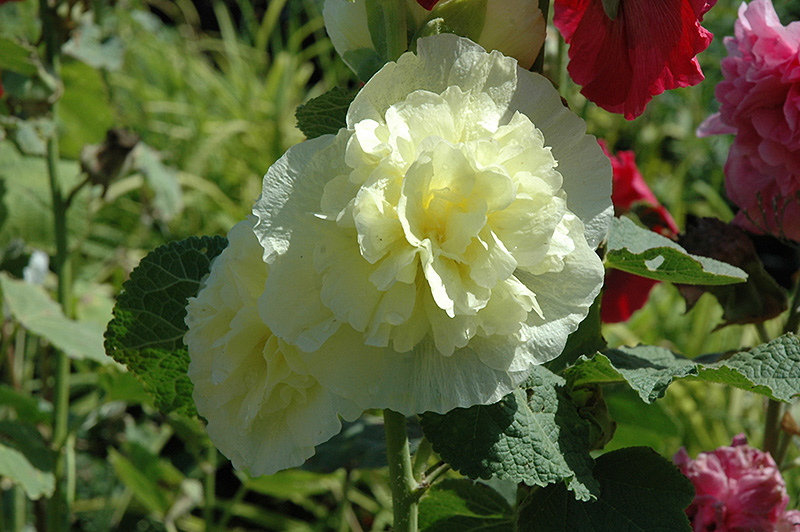Chater's Double Yellow Hollyhock
Alcea rosea 'Chater's Double Yellow'
Plant Height: 4 feet
Flower Height: 6 feet
Spread: 24 inches
Sunlight:
![]()
Hardiness Zone: 2
Other Names: Althaea rosea
Description:
Bold, ruffled, double yellow flowers on towering spikes, this biennial is tolerant to the natural toxin formed by the roots of Black Walnut, but can be susceptible to Japanese beetles; plant in full sun for better growth
Ornamental Features
Chater's Double Yellow Hollyhock features bold spikes of yellow round flowers rising above the foliage from mid to late summer. The flowers are excellent for cutting. Its large tomentose round leaves remain grayish green in color throughout the season.
Landscape Attributes
Chater's Double Yellow Hollyhock is an herbaceous perennial with a rigidly upright and towering form. Its relatively coarse texture can be used to stand it apart from other garden plants with finer foliage.
This plant will require occasional maintenance and upkeep, and is best cleaned up in early spring before it resumes active growth for the season. It is a good choice for attracting butterflies and hummingbirds to your yard, but is not particularly attractive to deer who tend to leave it alone in favor of tastier treats. Gardeners should be aware of the following characteristic(s) that may warrant special consideration;
- Disease
- Self-Seeding
Chater's Double Yellow Hollyhock is recommended for the following landscape applications;
- Vertical Accent
- Mass Planting
- General Garden Use
Planting & Growing
Chater's Double Yellow Hollyhock will grow to be about 4 feet tall at maturity extending to 6 feet tall with the flowers, with a spread of 24 inches. It tends to be leggy, with a typical clearance of 1 foot from the ground, and should be underplanted with lower-growing perennials. The flower stalks can be weak and so it may require staking in exposed sites or excessively rich soils. It grows at a fast rate, and tends to be biennial, meaning that it puts on vegetative growth the first year, flowers the second, and then dies. However, this species tends to self-seed and will thereby endure for years in the garden if allowed. As an herbaceous perennial, this plant will usually die back to the crown each winter, and will regrow from the base each spring. Be careful not to disturb the crown in late winter when it may not be readily seen!
This plant should only be grown in full sunlight. It prefers dry to average moisture levels with very well-drained soil, and will often die in standing water. It is not particular as to soil type or pH. It is highly tolerant of urban pollution and will even thrive in inner city environments. This is a selected variety of a species not originally from North America.
A NetPS Plant Finder tool
This Plant Library is for informational purposes only. We may or may not carry the items listed. During many times of the year, we may carry many more plants in our store than are listed in the Plant Library. Please contact us directly at 303-690-4722 or visit our store for current availability and for assistance.
